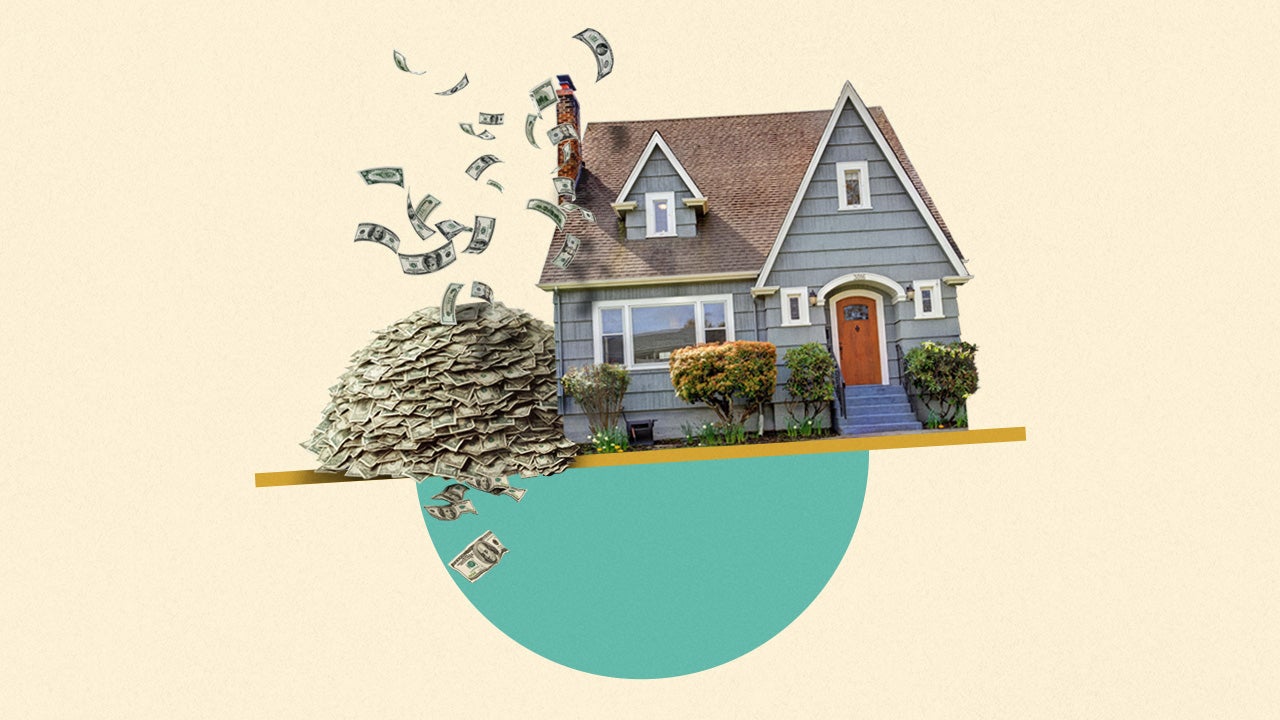How is credit card interest calculated?

Key takeaways
- Credit card interest can add up quickly, so it's essential to know how it’s calculated and when it will hit your account.
- Most issuers use an average daily balance with a compounding formula to determine how much interest you owe.
- There are ways to reduce the amount of interest you owe on a credit card balance.
The average American has between three and four credit cards, according to Q3 2023 data from Experian, and 44 percent of these cardholders carry a balance from month to month, according to Bankrate’s 2024 Chasing Rewards in Debt Survey. Depending on their credit card terms, that means that 44 percent of cardholders could be charged interest on their purchases from month to month. Understanding how this interest is calculated can help you plan for the times you might have to carry a balance — or even avoid carrying one altogether.
Interest, or the rate banks charge to lend you money, is an important factor to consider when using credit cards. Here, we’ll cover how interest is calculated — and how you can use these calculations to manage your budget and finances more responsibly.
How to calculate credit card interest
When trying to understand how credit card interest is calculated, it’s important to consider the different factors that go into it. Credit card interest is the price you pay for using someone else’s money to make purchases. It’s calculated based on your annual percentage rate (APR), the interest rate on an annual basis, as well as your average daily balance. You can calculate your interest using the following steps:
1. Convert the annual rate to the daily rate
Credit card interest is usually expressed as an APR (yearly rate). This is then broken down into a daily rate so you can calculate the amount of interest you will be charged for any given day. To convert an APR to a daily rate, divide the APR by 365, the number of days in a year. It’s important to note that some lenders may divide the APR by 360. Simply check your cardholder agreement to see which option your card issuer applies
Let’s say you have an APR of 19 percent, which is relatively low compared to the current average of 20.66 percent. Divide that by 365:
19% / 365 = 0.052%
This means your daily rate is 0.052 percent.
2. Calculate your average daily balance
Your daily balance is the amount you owe on your card at the end of each day, and your average daily balance is the sum of all those daily balances divided by the number of days in your billing cycle.
Your credit card balance fluctuates throughout a billing cycle based on new purchases or returns, any fees you’re assessed (such as foreign transaction fees) and any mid-cycle payments you make. If your credit card issuer uses a compounding interest formula to assess interest (as most do), your daily balance will also include any interest accrued from the prior day’s balance.
You can calculate your average daily balance by looking at your credit card statement and adding or subtracting transactions from each day to find each day’s balance (don’t forget to add the daily interest you figured in Step 1 if your bank uses a compounding interest model).
Then, add all those daily balances together and divide that figure by the number of days in your billing cycle. The result will be your average daily balance.
To simplify this, let’s say you owe $1,000 at the start of your billing cycle, don’t make any additional charges to the card and don’t pay anything off. This means that the daily balance for each day in your billing cycle — let’s say it’s 31 days — would be $1,000. To find the average daily balance, we’d add each daily balance to get the total. In this case, since the daily balance was $1,000 for each day, the total daily balance would simply be $31,000.
Then, divide that total by the number of days in the billing cycle:
$31,000 / 31 = $1,000
$1,000 is your average daily balance.
3. Determine your interest charges
Once you have your daily rate and average daily balance, you can calculate your interest charges by multiplying the two numbers together and then multiplying that number by the number of days in the billing period. This equation will give you the total interest charges you will be charged for the given billing period.
Let’s wrap up our example. Take your daily rate of 0.052 percent and your average daily balance of $1,000. Now, multiply them:
0.052% x $1,000 = $0.52
Next, multiply that amount by 31 since that’s the number of days in the billing cycle.
$0.52 x 31 = $16.12
So, you’ll pay $16.12 in interest charges that month.
If you want to look at your interest charges and how they change your total daily balance, you can also calculate that. Let’s go back to our $1,000 balance. After day one, you’ll have accrued 0.052 percent interest on your debt, bringing your new balance to $1,000.52. On day two, you’ll be charged that same interest percentage on your balance, bringing your debt total to $1,001.04. You can continue this pattern for the whole billing cycle, taking into account any additional charges or payments you’ve made to the card.
Bankrate’s take: Whether you look at the calculations for your credit card interest monthly or daily, your debt will continue to rise if you don’t make a plan to pay it off. If you find yourself carrying a balance month to month, prioritize paying that debt down as quickly as possible.
How does credit card interest work?
Now that we know how credit card interest is calculated, we can discuss how and when credit card issuers apply that interest. In most cases, credit card interest is charged when you don’t pay your entire balance by the end of your grace period (if your card has one) and decide to carry a balance from month to month.
When this occurs, the credit card company will calculate how much you owe at the end of each billing cycle. Although your interest compounds daily, your issuer typically won’t add the interest to your balance until the first day of the next billing cycle. This process is repeated each month if you don’t pay off your balance in full.
APR vs. interest rates
The terms “annual percentage rate” and “interest rates” are often used interchangeably when discussing credit cards. However, there are some differences. The APR is the cost of credit on a yearly basis and includes both the interest rate and any applicable fees (though these are less common with credit cards than with other financial products). It’s expressed as a percentage and is the most widely used rate to compare credit products. There’s also more than one type of APR, such as:
- Purchase APR: The most commonly marketed APR, which applies to purchases made with your card
- Balance transfer APR: Applied to any balance transfers you make to your card
- Penalty APR: Kicks in after you fail to make at least the minimum payments due on your credit card and are usually higher than your card’s regular purchase or balance transfer APR
Interest rates are typically associated more with mortgages and other types of loans. An interest rate is just the cost of borrowing money, expressed as a percentage of the loan principal, and it doesn’t include any other charges.
How do card issuers determine interest rates?
Card issuers determine credit card APRs based on several factors, including your:
- Credit history
- Credit score
- Payment history
Generally speaking, if you have a good credit score or excellent credit score, you’re going to qualify for a lower interest rate. The lower your score, the higher your rate is likely to be.
The type of credit card you’re applying for can also influence the APR. For example, rewards cards tend to have higher APRs than non-rewards cards due to the added benefits these cards offer.
Additionally, some cards have introductory APRs that are lower than the standard APR for a set period, then revert to a typical APR. This is seen most often with cards that offer a 0 percent introductory APR on either purchases, balance transfers or both. These introductory rates typically last anywhere from 12 to 21 months.
How to lower your credit card interest rate
Most credit card issuers offer the opportunity to lower the interest rate charged on your credit card balance. Here are some steps you can take to reduce your credit card interest rate:
- Shop around for a better rate. You may be able to find a lower interest rate with a different credit card issuer. Do your research to find a credit card with competitive interest rates and terms.
- Ask for a lower rate. If you’ve improved your credit score and are in good standing with your issuer, you may qualify for a lower interest rate on your current card or qualify for one of today’s best credit cards. Contact your issuer to request a lower rate and negotiate a new rate that works for both parties.
- Consider transferring your balance. A balance transfer credit card with a 0 percent introductory APR can allow you to avoid incurring interest for a specified period, usually from 12 to 21 months. So if you transfer a balance from a higher-interest credit card, you’re effectively changing the interest rate on that balance to 0 percent for a limited time. If you pay everything off during that introductory period, you won’t accrue additional interest at all
Keep in mind: Balance transfers typically come with balance transfer fees, which are usually 3 percent to 5 percent of the balance being transferred. Make sure you take that into consideration when deciding whether transferring your debt is worth it.
How to avoid interest on your credit card debt
Instead of changing your interest rate, sometimes it’s smarter to focus on lowering the amount of interest you’re charged. Here are some common ways to do so:
- Pay your credit card bills in full each billing cycle. The best way to avoid accruing interest on your credit card debt is to pay it off in full every month. However, that’s not always feasible to do, especially when it comes to emergency situations like surprise home repairs or medical bills.
- Make more than the minimum payment. If you can’t pay off your balance in full, then the next best thing is making more than the minimum payment each month. By doing this, you could pay off your balance faster and reduce the overall amount of interest you’re charged.
- Make multiple payments each month. Making multiple payments in the same month will reduce your average daily balance, reducing the interest you’ll be charged.
- Use a 0 percent APR credit card. A card with a strong 0 percent introductory APR offer can be useful for more than just balance transfers. It can also save you money on purchases. If you have a large purchase that you know you’ll need to put on your credit card, such as an auto repair job, consider getting a credit card with a 0 percent introductory APR offer on purchases. This way, you can avoid interest as you pay off the purchase.
The bottom line
Credit card interest typically kicks in when you don’t pay off your card in full and allow it to roll over past your grace period into the next billing cycle. The money you haven’t paid off will get charged with interest, which is typically compounded daily. However, instead of seeing your balance rise little by little each day, you’ll typically see the interest charged to your account at the end of your billing cycle when you receive your credit card statement.
If you want to lower your interest rate, consider contacting your issuer to see what they can do for you. Many credit card issuers have programs to help their cardholders keep up with their payments.
To avoid accruing interest altogether, consider moving your credit card debt from your high-interest card to a balance transfer credit card with a strong 0 percent introductory APR offer. This can allow you to pay down the debt without accruing interest — but be sure to pay it all off before the introductory period ends. Otherwise, you’ll start accruing interest on whatever balance remains on the card.
Frequently asked questions (FAQs) about credit card interest
-
Now that we’ve answered “How is interest calculated on credit cards,” you likely want to know what a good interest rate actually is. Generally speaking, a “good” interest rate on a credit card is lower than the national average rate. Those with excellent credit scores may be offered interest rates at or below this average.
-
The average credit card interest rate changes frequently, but as of September 2024, it was 20.70 percent. As always, the exact rate you get will depend on your creditworthiness and the specific terms of your credit card agreement.
-
Interest on a credit card is typically charged at the end of each billing cycle. To avoid interest, you must pay your credit card balance in full before the due date. If you only pay the minimum payment amount due, the remaining balance is carried over to the next billing cycle, and you’ll be charged interest on that balance. Non-purchase transactions, such as cash advances and sometimes balance transfers, can immediately accrue interest. Additionally, some cards begin charging interest on purchases immediately when the transaction is made, so be sure to read your card agreement to understand how interest is charged.







